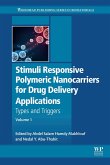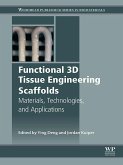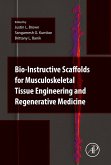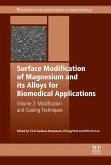Electrospinning, an electro-hydrodynamic process, is a versatile and promising platform technology for the production of nanofibrous materials for tissue engineering and biomedical applications.
Electrospun Materials for Tissue Engineering and Biomedical Applications, examines the rapid development of electrospun materials for use in tissue engineering and biomedical applications. With a strong focus on fundamental materials science and engineering, this book also looks at successful technology transfers to the biomedical industry, highlighting biomedical products already on the market as well as the requirements to successfully commercialize electrospun materials for potential use in tissue engineering and biomedical areas.
This book is a valuable resource for materials and biomedical scientists and engineers wishing to broaden their knowledge on the tissue engineering and biomedical applications of electrospun fibrous materials.
Electrospun Materials for Tissue Engineering and Biomedical Applications, examines the rapid development of electrospun materials for use in tissue engineering and biomedical applications. With a strong focus on fundamental materials science and engineering, this book also looks at successful technology transfers to the biomedical industry, highlighting biomedical products already on the market as well as the requirements to successfully commercialize electrospun materials for potential use in tissue engineering and biomedical areas.
This book is a valuable resource for materials and biomedical scientists and engineers wishing to broaden their knowledge on the tissue engineering and biomedical applications of electrospun fibrous materials.
- Provides all-encompassing coverage of fundamental science, technology and industrial case studies
- Presents guidance on industrial scalability of electrospun biomaterials
- Written by a multidisciplinary team or researchers from academia and industry, offering a balanced viewpoint on the subject
Dieser Download kann aus rechtlichen Gründen nur mit Rechnungsadresse in A, B, BG, CY, CZ, D, DK, EW, E, FIN, F, GR, HR, H, IRL, I, LT, L, LR, M, NL, PL, P, R, S, SLO, SK ausgeliefert werden.









